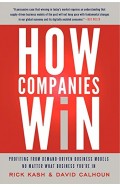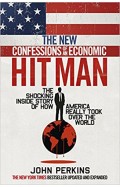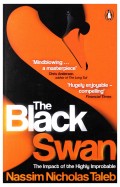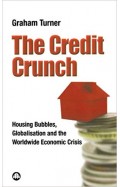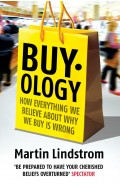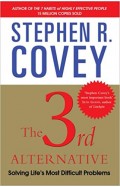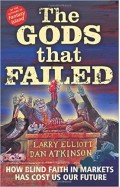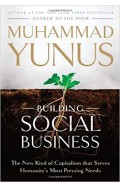The EuroAnd its Threat to the Future of Europe
By: Joseph E. Stiglitz
-
Rs 1,525.50
- Rs 1,695.00
- 10%
You save Rs 169.50.
Due to constant currency fluctuation, prices are subject to change with or without notice.
From Nobel Prize-winning economist and best-selling author Joseph Sitglitz, author of Globalization and Its Discontents, this is the essential, must-read guide to the future of Europe.
Solidarity
and prosperity fostered by economic integration: this principle has
underpinned the European project from the start, and the establishment
of a common currency was supposed to be its most audacious and tangible
achievement. Since 2008, however, the European Union has ricocheted
between stagnation and crisis. The inability of the eurozone to match
the recovery in the USA and UK has exposed its governing structures,
institutions and policies as dysfunctional and called into question the
viability of a common currency shared by such different economies as
Germany and Greece.
Designed to bring the European Union closer together, the euro has actually done the opposite: after nearly a decade without growth, unity has been replaced with dissent and enlargements with prospective exits. Joseph Stiglitz argues that Europe's stagnation and bleak outlook are a direct result of the fundamental flaws inherent in the euro project - economic integration outpacing political integration with a structure that promotes divergence rather than convergence. Money relentlessly leaves the weaker member states and goes to the strong, with debt accumulating in a few ill-favoured countries. The question then is: Can the euro be saved?
Laying bare the European Central Bank's misguided inflation-only mandate and explaining why austerity has condemned Europe to unending stagnation, Stiglitz outlines the fundamental reforms necessary to the structure of the eurozone and the policies imposed on the member countries suffering the most. But the same lack of sufficient political solidarity that led to the creation of a flawed euro twenty years ago suggests that these reforms are unlikely to be adopted. Hoping to avoid the huge costs associated with current policies, Stiglitz proposes two other alternatives: a well-managed end to the common currency; or a bold, new system dubbed 'the flexible euro.' This important book, by one of the world's leading economists, addresses the euro-crisis on a bigger intellectual scale than any predecessor.
| Book | |
| What's in the Box? | 1 x The EuroAnd its Threat to the Future of Europe |
From Nobel Prize-winning economist and best-selling author Joseph Sitglitz, author of Globalization and Its Discontents, this is the essential, must-read guide to the future of Europe.
Solidarity
and prosperity fostered by economic integration: this principle has
underpinned the European project from the start, and the establishment
of a common currency was supposed to be its most audacious and tangible
achievement. Since 2008, however, the European Union has ricocheted
between stagnation and crisis. The inability of the eurozone to match
the recovery in the USA and UK has exposed its governing structures,
institutions and policies as dysfunctional and called into question the
viability of a common currency shared by such different economies as
Germany and Greece.
Designed to bring the European Union closer together, the euro has actually done the opposite: after nearly a decade without growth, unity has been replaced with dissent and enlargements with prospective exits. Joseph Stiglitz argues that Europe's stagnation and bleak outlook are a direct result of the fundamental flaws inherent in the euro project - economic integration outpacing political integration with a structure that promotes divergence rather than convergence. Money relentlessly leaves the weaker member states and goes to the strong, with debt accumulating in a few ill-favoured countries. The question then is: Can the euro be saved?
Laying bare the European Central Bank's misguided inflation-only mandate and explaining why austerity has condemned Europe to unending stagnation, Stiglitz outlines the fundamental reforms necessary to the structure of the eurozone and the policies imposed on the member countries suffering the most. But the same lack of sufficient political solidarity that led to the creation of a flawed euro twenty years ago suggests that these reforms are unlikely to be adopted. Hoping to avoid the huge costs associated with current policies, Stiglitz proposes two other alternatives: a well-managed end to the common currency; or a bold, new system dubbed 'the flexible euro.' This important book, by one of the world's leading economists, addresses the euro-crisis on a bigger intellectual scale than any predecessor.
The EuroAnd its Threat to the Future of Europe
By: Joseph E. Stiglitz
Rs 1,525.50 Rs 1,695.00 Ex Tax :Rs 1,525.50
People, Power, and Profits: Progressive Capitalism for an Age of Discontent
By: Joseph E. Stiglitz
Rs 2,605.50 Rs 2,895.00 Ex Tax :Rs 2,605.50
Globalization and Its Discontents Revisited: Anti-Globalization in the Era of Trump - Paperback
By: Joseph E. Stiglitz
Rs 2,965.50 Rs 3,295.00 Ex Tax :Rs 2,965.50
People, Power, and Profits: Progressive Capitalism for an Age of Discontent - Paperback
By: Joseph E. Stiglitz
Rs 2,515.50 Rs 2,795.00 Ex Tax :Rs 2,515.50
The Euro: And its Threat to the Future of Europe - Paperback
By: Joseph E. Stiglitz
Rs 1,780.75 Rs 2,095.00 Ex Tax :Rs 1,780.75
The Road to Freedom - Economics and the Good Society
By: Joseph E. Stiglitz
Rs 5,665.50 Rs 6,295.00 Ex Tax :Rs 5,665.50
Zubin Mehta: A Musical Journey (An Authorized Biography)
By: VOID - Bakhtiar K. Dadabhoy
Rs 892.50 Rs 1,050.00 Ex Tax :Rs 892.50
How Companies Win Profiting From Demand Driven Busine Models No Matter What BusineYoure In
By: Rick Kash
Rs 1,695.75 Rs 1,995.00 Ex Tax :Rs 1,695.75
The New Confessions of an Economic Hit Man
By: John Perkins
Rs 3,415.50 Rs 3,795.00 Ex Tax :Rs 3,415.50
The Black Swan The Impact Of The Highly Improbable
By: Nassim Nicholas Taleb
Rs 2,965.50 Rs 3,295.00 Ex Tax :Rs 2,965.50
Inside Apple How Americas Mo Admired And Secretive Company Really Works
By: Adam Lashinsky
Rs 1,215.00 Rs 1,350.00 Ex Tax :Rs 1,215.00
Buyology How Everything We Believe About Why We Buy Is Wrong
By: Martin Lindstrom
Rs 2,515.50 Rs 2,795.00 Ex Tax :Rs 2,515.50
The 3rd Alternative Solving Life s Most Difficult Problems
By: Stephen Covey
Rs 675.75 Rs 795.00 Ex Tax :Rs 675.75
Building Social Business The New Kind Of Capitalism That Serves Humanitys Most Pressing Needs
By: Muhammad Yunus
Rs 360.00 Rs 400.00 Ex Tax :Rs 360.00
How Companies Win Profiting From Demand Driven Busine Models No Matter What BusineYoure In
By: Rick Kash
Rs 1,695.75 Rs 1,995.00 Ex Tax :Rs 1,695.75
The New Confessions of an Economic Hit Man
By: John Perkins
Rs 3,415.50 Rs 3,795.00 Ex Tax :Rs 3,415.50
No recently viewed books available at the moment.
Zubin Mehta: A Musical Journey (An Authorized Biography)
By: VOID - Bakhtiar K. Dadabhoy
Rs 892.50 Rs 1,050.00 Ex Tax :Rs 892.50
The EuroAnd its Threat to the Future of Europe
By: Joseph E. Stiglitz
Rs 1,525.50 Rs 1,695.00 Ex Tax :Rs 1,525.50
People, Power, and Profits: Progressive Capitalism for an Age of Discontent
By: Joseph E. Stiglitz
Rs 2,605.50 Rs 2,895.00 Ex Tax :Rs 2,605.50
Globalization and Its Discontents Revisited: Anti-Globalization in the Era of Trump - Paperback
By: Joseph E. Stiglitz
Rs 2,965.50 Rs 3,295.00 Ex Tax :Rs 2,965.50
People, Power, and Profits: Progressive Capitalism for an Age of Discontent - Paperback
By: Joseph E. Stiglitz
Rs 2,515.50 Rs 2,795.00 Ex Tax :Rs 2,515.50
The Euro: And its Threat to the Future of Europe - Paperback
By: Joseph E. Stiglitz
Rs 1,780.75 Rs 2,095.00 Ex Tax :Rs 1,780.75
The Road to Freedom - Economics and the Good Society
By: Joseph E. Stiglitz
Rs 5,665.50 Rs 6,295.00 Ex Tax :Rs 5,665.50
How Companies Win Profiting From Demand Driven Busine Models No Matter What BusineYoure In
By: Rick Kash
Rs 1,695.75 Rs 1,995.00 Ex Tax :Rs 1,695.75
The New Confessions of an Economic Hit Man
By: John Perkins
Rs 3,415.50 Rs 3,795.00 Ex Tax :Rs 3,415.50












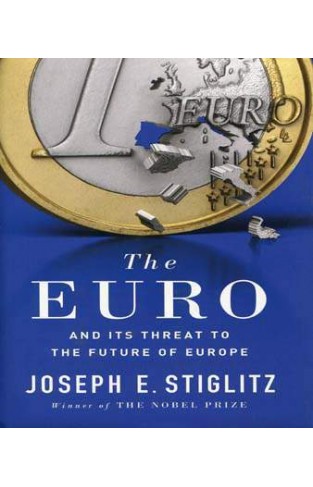
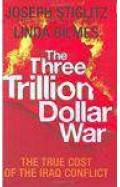
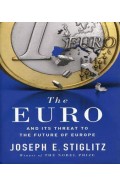
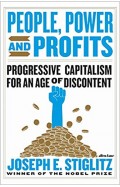
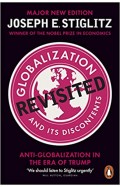
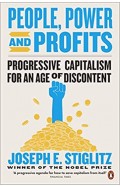
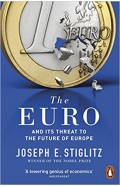

-120x187.jpg?q6)





